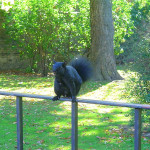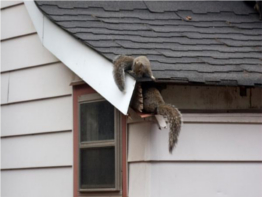Urban Squirrels of Toronto: How Do They Survive The Winter

Just like the human citizens, Toronto’s squirrel population prepare in their own particular way for the cold winter months that are experienced. The natural habitat of squirrels are in hardwood or mixed wood forest which provide them with shelter as well as the nuts they thrive on. However, these animals have come to adapt to city life due to the varied number of places to get shelter and nest as well as the abundant supply of food. Besides feeding on nuts that they collect, squirrels are attracted to the seeds in bird feeders and any other scrap of food that may be left lying around. There are also less threats from predators in the city.There are many trees in the city of Toronto which do offer homes for squirrels during the warmer seasons. In the winter when trees have shed their leaves squirrels head for the warmth and comfort of houses and buildings. They most commonly occupy attics and spaces beneath the roof, which they access by climbing along the branches of trees. One may find several squirrels sharing one nest to help keep each other warm. As the winter months draw closer, squirrels begin storing or hoarding food. They do this by digging shallow holes in the ground in several different spots and placing nuts within. These are then sought out and dug up when needed.
In addition to hoarding, squirrels tend to consume more food leading up to winter. In this way they put on extra fat to act as an insulating layer. It is their way of putting on a winter coat. Since they do not hibernate, this extra layer will also serve as a food reserve for the long months ahead. One other interesting way in which squirrels keep warm is by shivering, which they do for long periods to generate extra body heat. Beyond making preparations for themselves, some squirrels are helped along by the kindness of Torontonians who may purposefully leave extra bits of food and grain for them to nibble on.




